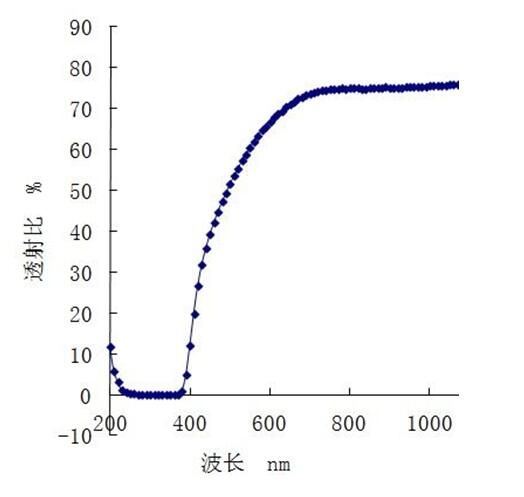The Spectrum of Sunlight spans a range of 0.1 nm to 3000 nm, including X-Rays,Ultraviolet, Visible Light, Infrared and even radio waves.
But when it striking the earth,the long wavelength radiation is absorbed by vapor and carbon dioxide in the atmosphere.Only near infrared radiation and the following short wave radiation can reach the earth.
Ultraviolet Radiation,which spans a range of 100 to 175nm is absorbed by the oxygen. Ultraviolet Radation, which spans a range 175 nm to 290 nm is absorbed by ozone.
Ultraviolet Radiation,which spans a range of 290 nm to 400 nm (the rest of the ultraviolet after being absorbed by the ozone)can finally reach the earth and affect the daily life.
When the skin exposed to Ultraviolet(UV),one of the most effect is solar dermatitis. Skin appears erythema, itching, blisters, edema, sore eyes, tears.In long term it will cause skin cancer. When central nervous system exposed to Ultraviolet(UV), there will be headache, dizziness, high temperature etc.
When the eyes exposed to Ultraviolet(UV)A, it will cause conjunctivitis, keratitis, called solar ophthalmia.Ultraviolet(UV) is also a risk factor for cataract and macular degeneration.
Ultraviolet (UV) exist at all seasons. Even in the winter of north hemisphere, when ultraviolet is more weak than summer by 20%.It could still do great harm to skin and eyes.
In plateau and high altitude area,where the air is rare the Ultraviolet(UV) radiation is stronger than plain, it is necessary to take UV protection measures(Wear snow goggles, UV Protection clothes) when have outdoor activities like climbing, skiing and investigation.
Ultraviolet(UV) can also do harm to polymers.It will cause material ageing by photooxidation.The factors causing photooxidation are complex.
Besides of the molecular structure and phototonus of resin itself and the impurities brought in synthetics (such as catalyst residue and oxidation products etc.), the ozone, air pollutants are also import induction factors of photooxidation.
In brief, when polymers are exposed to UV Radiation, the functional groups in polymer will become active and produce a large number of alkyl free radicals which could be involved in chain reaction in the presence of oxygen. After catalytic cycle, the free radicals will increase at geometric rate.As a result, it will break the carbon chain of Polymers, produce chromophore and finally make Polymer go degradation. The strength of polymer become more fragile, the mechanical performance reduce,the aesthetic performance is seriously affected.
In order to protect our body and polymers from damage of Ultraviolet, a large amount of UV Absorbers have been invented and come into the market. Nowadays the widely used UV Absorbers can be divided into two categories inorganic materials(zinc oxide, titanium dioxide, carbon black, etc.) and organic polymer additives (salicylic acid ester, benzotriazole, benzophenone,nickel quencher Triazine and Hydroxyphenyl-S-Triaznes).
These common UV Absorbers, however, are solvent based and have limited UV absorptance in broad wavelength from 290 to 400nm.
A typical examples in coating industry, UV absorber JADEWIN UV 1130 is a very popular additive for solvent based automobile coating.It can absorb UV Radiation effectively in both UVB and UVA. But JADEWIN UV 1130 itself can only be solved into water or water based coatings by emulsifier. As the more and more strict requirements for environmental friendly and low VOC in paints&Coating industry, particularly in textile and household decorative field,where the application of solvent coating or emulsifier is restrained.
Benzophenone UV absorbers like JADEWIN BP 4 and JADEWIN BP5 are water soluble and have good absorptance in UVB because of it’s hydrophilia sulfonic acid group.Benefit from its features of water solubility,JADEWIN BP4 and JADEWIN BP5 is widely used in some water-based ink and makeup cosmetics. However, these two products has very high acidity that can damage the water-borne acrylic and polyurethane. Therefore in weak acid, weak alkali and alkaline resin, it cannot be applied.
To solve the solubility of UV Absorbers in water, we developed new water soluble UV absorber JADEWIN UV402DW. JADEWIN UV402DW is a new type of nano material that are dispersed into water by special technic without any emulsifier. JADEWIN UV402DW has good compatibility with most water-based resins and with features of non-toxic, odorless, non-volatile and very good thermal stability.It can be easily dispersed into polymer system.
JADWIN UV 402DW is very sensitive to UV radiation.It has very good performance to block UV radiation by scattering, reflecting and absorption.
JADEWIN UV402DW achieve three breakthrough,
-Overcoming the shortcoming of traditional organic UV Absorber that cannot be dispersed into water without emulsifier and narrow UV absorption wavelength.
-Overcoming the shortcoming of traditional inorganic UV Absorber that can only block UV Radiation by reflecting and low UV blocking efficiency
-Overcoming the shortcoming of traditional UV absorber that can only work when the material is thick enough.
JADEWIN 402 DW can absorb ultraviolet wavelength from 280 nm to 400 nm effectively and can completely block UV Radiation even if the carrier is only 5 microns.
JADEWIN UV 402 DW is significantly important for weather resistant water-based resins,UV blocking textile fabrics,and waterborne coatings.
As an important supplement to existing commerical UV Absorbers ,we believe JADWIN UV 402DW will have profound effects and enjoy big market in functional water-based materials, particularly water-based paint, resin, functional coating, environmental friendly synthetic fiber, sunscreen cosmetics and etc.
For more details please contact with our local agencies.
